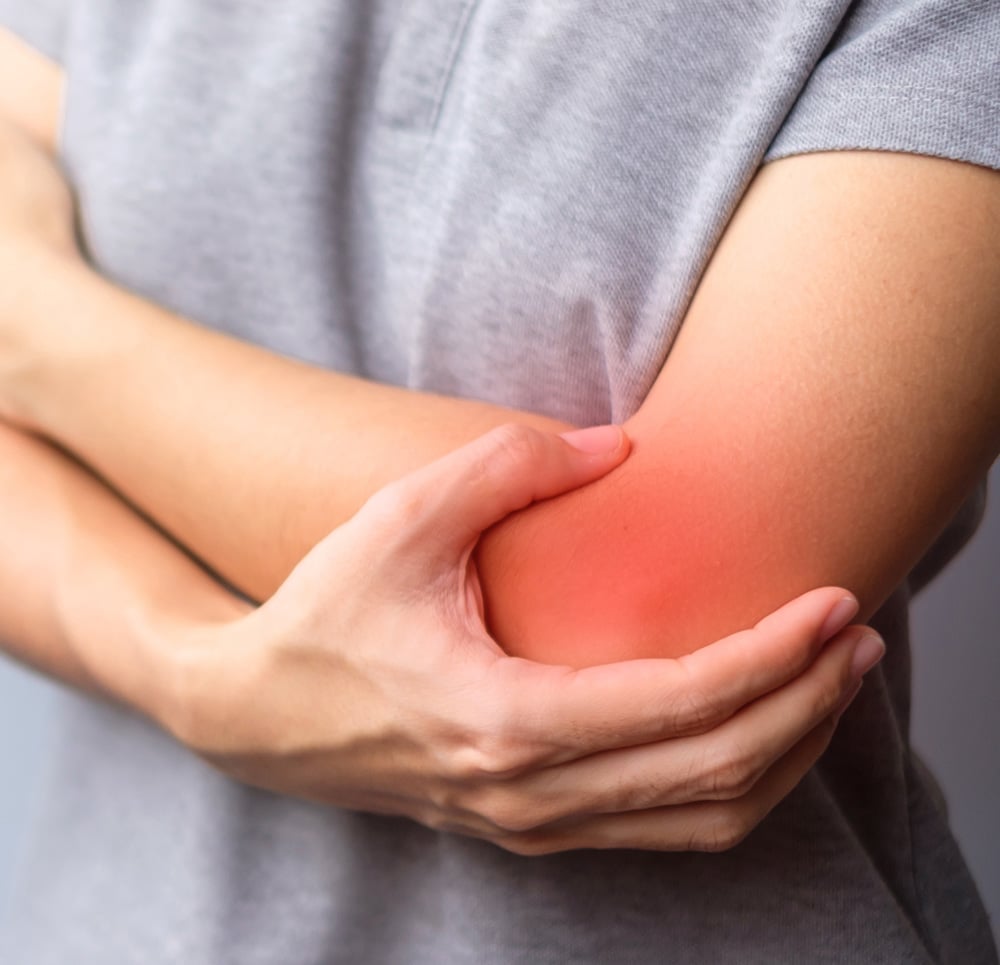Elbow Care
We treat a variety of hip ailments non-surgically. Here are some common conditions:
- Tennis Elbow
- Cubital Tunnel Syndrome
Tennis Elbow
While there are a variety of ailments to the elbow, maybe the most common one is Lateral Epicondylitis, also known as tennis elbow. Tennis elbow results in overuse of the muscles of the forearm that straighten and raise your hand and wrist. When the muscles are overused, the tendons are repeatedly tugged at the point of attachment, causing the tendons to become inflamed.
Symptoms of tennis elbow include pain or tenderness on the outer side of the elbow or when you straighten or raise your wrist and hand. Lifting a heavy object or gripping an object can cause pain that shoots from the elbow or into the upper arm.
Treatments include ice and anti-inflammatory medication. An elbow strap may relieve your symptoms. Your doctor may recommend an injection of corticosteroid medication to reduce inflammation. In severe cases surgery may be necessary.
In some cases tennis elbow can be prevented by stretching and warming exercises before activities. In job related activities, be sure your posture is correct and that the position of your arms during work doesn’t cause overuse of your elbow or arm muscles.
The elbow is a hinge joint consisting of three bones. The upper part of the hinge is at the end of the upper arm bone (humerus), and the lower part of the hinge is at the top of the two forearm bones (radius and ulna) which are side by side. When the elbow is bent, the ends of the two forearm bones rub against the end of the humerus.
Bones of Elbow Joint
In a healthy elbow joint, the surfaces of these bones are very smooth and covered with a tough protective tissue called cartilage. Arthritis causes damage to the bone surfaces and cartilage where the three bones rub together. These damaged surfaces eventually become painful.
Arthritic Elbow Joint Surfaces
In total elbow replacement surgery, an artificial hinge made of metal and a very durable plastic material is inserted into the joint so that the elbow can move without allowing the two forearm bones to contact the humerus. We call this artificial hinge an “implant.”
Getting to the Joint
The patient is first taken into the operating room and given anesthesia. After the anesthesia has taken effect, the skin around the elbow is thoroughly scrubbed and sterilized with an antiseptic liquid. A tourniquet is then applied to the upper portion of the arm to help slow the flow of blood.
An incision about six inches long is then made over the elbow joint. The incision is gradually made deeper through muscle and other tissue until the bones of the elbow joint are exposed.
Preparing the Bones
This allows the two forearm bones to be rotated out of the way so parts of the humerus can be removed with the saw. Precision guides are used to help make sure that the cuts are made so the bones will align properly after the implant is inserted.
The middle portion at the end of the humerus is removed first.
The arm bones have relatively soft, porous bone tissue in the center. This part of the bone is called the “canal.” Special instruments are used to clear some of this soft bone from the canal of the humerus. These instruments also help shape the canal to fit the shape of the implant.
Then, similar instruments are used to clear some of the soft bone and shape the canal of the ulna.
Attaching the Implants
When the cement is hard, the two implant parts are brought together and the pin is inserted to connect them.
Closing the Wound
When all of the implants are in place and the ligaments are properly adjusted, the surgeon sews the layers of tissue back into their proper position. A plastic tube may be inserted into the wound to allow liquids to drain from the site during the first few hours after surgery. The edges of the skin are then sewn together, and the elbow is wrapped in a sterile bandage. Finally, the patient is taken to the recovery room.
Always call us directly with your questions and concerns!
Call Us At (573)-248-1010
“Have had a great experience from the first phone call to the dr visit. Very professional, friendly and extremely caring. Highly recommend these drs to anyone.“
Katherine Gibb
Patient

